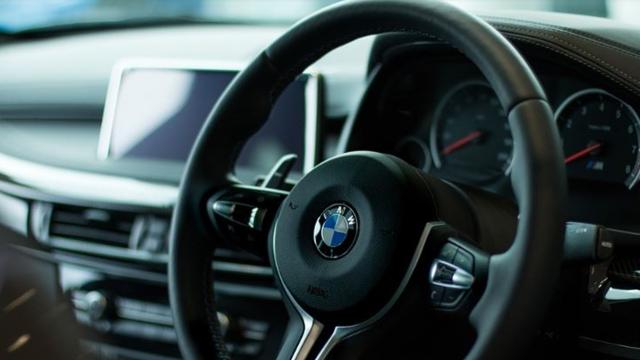Buying a car can be an exciting experience. The joy of finding a bargain while examining all of the motors you could see yourself driving is a feeling that's seldom beaten. At the end of the day, it has been proven that buying a car is cheaper than travelling by train.
It's just a shame that there are so many things to remember to do during the buying process to make sure the car you're paying for is in an acceptable condition to take home.
A single oversight could lead to costly repairs or even a write-off, so it pays to stay on the ball. To help you along, I have created a list of 10 important and sometimes overlooked things to look out for and ask when buying a car.
1. Ask for the relevant documentation
All cars should carry a service history that shows all work that has been done on the motor. It's a great indicator of underlying problems, and any crashes that it may have been involved in.
Competent second-hand car dealers should prioritise making this documentation available to the parties interested in buying their vehicle, but be wary of incomplete papers or missing service history - they may have something that they're trying to hide.
Also be sure to ask for the car's V5C registration documentation. You'll be unable to tax the car without it.
2. Check for rust
It may seem as though it's stating the obvious, but finding rust on the car you're looking at buying can tell you a lot about the condition and how worn its components are.
Check the paintwork for rust spots and evidence of recent paint jobs. Stand to face the car's front and back and look for any inconsistent waviness on the sides of the motor - this indicates extra paintwork.
Be sure to check underneath the car for rust on the exhaust system too. Also be mindful of black spots on the exhaust - this points to leaks.
3. Ask for confirmation of the car's features
You might've researched the car you're planning on looking at online, and know the model's specification inside out - but it's still worth checking to make sure that the motor carries all the perks, performance and creature comforts that have been advertised.
It is the dealer's obligation to sell their vehicles as 'as described', and any inconsistencies pose a problem to the dealership or seller's trustworthiness.
Furthermore, if you find evidence of a scratch or dent that wasn't mentioned in the seller's description, it's fair to ask for a discount.
4. Pay close attention to the frame
It's vital that you check the frame of the car you're looking to purchase. If there are any signs of damage, it points to a weakened chassis that may not be strong enough to protect you in a crash.
Take a look at the saddle, which connects the front bumper and holds the top of the radiator. If it's bolted in place, check the bolts - scratch marks indicate that they've been replaced or realigned, possibly as a result of a crash.
5. Ask whether the car has been damaged
The seller's answer to this question could make or break your purchase.
While earlier damage isn't good news, if the crash wasn't severe then it doesn't need to influence your decision.
It's also worth enquiring as to whether or not the car you're looking at has ever been written off. There are four categories for written off cars, with A and B labelling the car as a 'total loss' and only suitable to be stripped for parts in the case of the latter. However, category C or D write-offs are legally able to be repaired and put back on the road.
Again, this information should also be visible in the V5C registration documentation and isn't necessarily a deal breaker as long as the recovery work was completed competently. But beware that the sell-on value for a previously written off car is considerably lower than its counterparts that have a clean accident history
6. Investigate the boot
The boot is an effective way of gauging a car's usage by previous owners.
There should be zero signs of rust or water (which indicates cracks or holes), and a spare wheel and jack for lifting the car will be present unless otherwise stated.
If you come across any wear within the boot of the car, beware that it probably means that it was used heavily by drivers in the past.
7. Ask if the car has a warranty
If the car's age means that it's still under warranty from the manufacturer, then you can expect it to transfer over to the new owner. Private sellers have no obligation to provide a warranty, but are required to sell the car 'as described.' For instance, Ford is known for providing one of the most reliable warranties, even for second-hand cars.
If a dealership doesn't offer a warranty, then it's best to ask why.
However, aftermarket warranties are available from a range of suppliers providing different levels of cover, so it pays to shop around and find a deal that's right for you.
8. Pay attention to warning signs
If there's an onboard computer in the car you're looking at, check for various warning signs when you turn the car on.
If there are any error messages or warnings that pop up which weren't specified in the car's description, you have the right to ask for an explanation, and potentially a discount based on the seller's answer.
9. Ask for confirmation of buyer's rights
Under the Consumer Rights Act, all cars that customers purchase should be of sufficient quality and fit for purpose. Furthermore, it's illegal under section 75 of the Road Traffic Act 1988 for anyone to sell a vehicle that isn't roadworthy.
As a buyer, you are entitled, if you can prove that there's a fault with the car, to a full refund if you return the motor within 30 days of purchase. Should you find an error between then and six months, you are entitled to a repair or replacement vehicle - which you can then reject for a refund in the problem persists.
If you can prove a fault was in effect from the time of the car's delivery to six years in the future, you are entitled to a repair or replacement, and a market-appropriate refund thereafter should the problem not be addressed.
Be sure to confirm with the seller that they will be compliant with your buyer's rights should the unlikely event of an issue arise.
10. Look for inconsistencies
Before you make a purchase, it's important to make sure there are no inconsistencies in the car's bodywork. Run your finger along the gaps in the panels. If the shape of the gap changes continually then it's a strong indicator that replacement body parts have been installed. If there's no mention of this occurring from the seller, then you have a right to ask for an explanation.



